I am very favorably impressed by the work that the Generation Rx groups are doing. Through my study of the neurobiology of addiction, I am convinced that education and life skills are crucial activities for optimizing use of medications to enhance wellness and to minimize addiction.
In this opinion piece, I will share some thoughts relative to the history of regulation of non-medical drug use.
By many measures, the most restrictive regulation in the United States was the 18th amendment to the US Constitution, enacted in January 1919. Manufacture, sale, and distribution of alcohol were prohibited. While the law initially decreased use of alcohol somewhat, the overall effect of Prohibition was a black market for manufacture and distribution of alcohol and a substantial expenditure of dollars and manpower to attempt to enforce the law. This law was repealed in 1933 by the 21st amendment to the constitution. An important lesson from this social experiment is that enterprising individuals will find a way (legal or illegal) to make money by meeting demand for a product.
The current law regulating non-medical use of drugs sets up regulatory schedules for drugs with abuse potential. Drugs that do not have a Food and Drug Administration-approved therapeutic use and that have high addiction potential are assigned to Schedule I. It is illegal to possess these drugs without special permission from the Drug Enforcement Administration. A strategy to skirt the law is to make designer drugs. These are pharmacologically active analogs that are chemically similar but not identical to the illegal drug. The “bath salt” drugs are designer drugs that are chemically similar, but not identical, to amphetamine and ecstasy. The major known “bath salt” drugs were assigned as Schedule I drugs in 2011. The number of seizures/arrests associated with these drugs has been declining since that time. However, this is offset by an increase in seizures of new designer drugs. The pharmacology of these drugs is currently under study. Results to date suggest a high probability that these drugs have similar addiction potential to those they are replacing. These events reinforce the concept that enterprising individuals will find a way (legal or illegal) to make money by meeting demand for a product. Thus, lessons from history inform us that regulations have their place but do not eliminate demand for drugs.
The question then arises as to what activities might decrease demand for non-medical use of drugs. This is a difficult question. Despite increased regulation over the last 44 years, the percent of the US population identified as having an addiction to an illicit drug has remained constant. What has changed is the particular drug(s) in highest demand. For example, 35 years ago, methaqualude (Sopors) was the most commonly used illicit drug on campuses. Few students in my recent classes have ever heard of this drug. This suggests that desire to use drugs for non-medical purposes has more to do with human behavior than the “captivating” power of a particular drug or class of drugs. This brings us back to the activities of Generation Rx groups. High quality, accurate information presented in ways that capture the attention of recipients has the potential to decrease demand for non-medical use of drugs. Furthermore, these same activities have the potential to help people be smarter in their medical use of drugs.
 Lane Wallace is a professor and chair of pharmacology at The Ohio State University College of Pharmacy. He specializes in neuropharmacology and mechanism of action of addicting drugs.
Lane Wallace is a professor and chair of pharmacology at The Ohio State University College of Pharmacy. He specializes in neuropharmacology and mechanism of action of addicting drugs.


